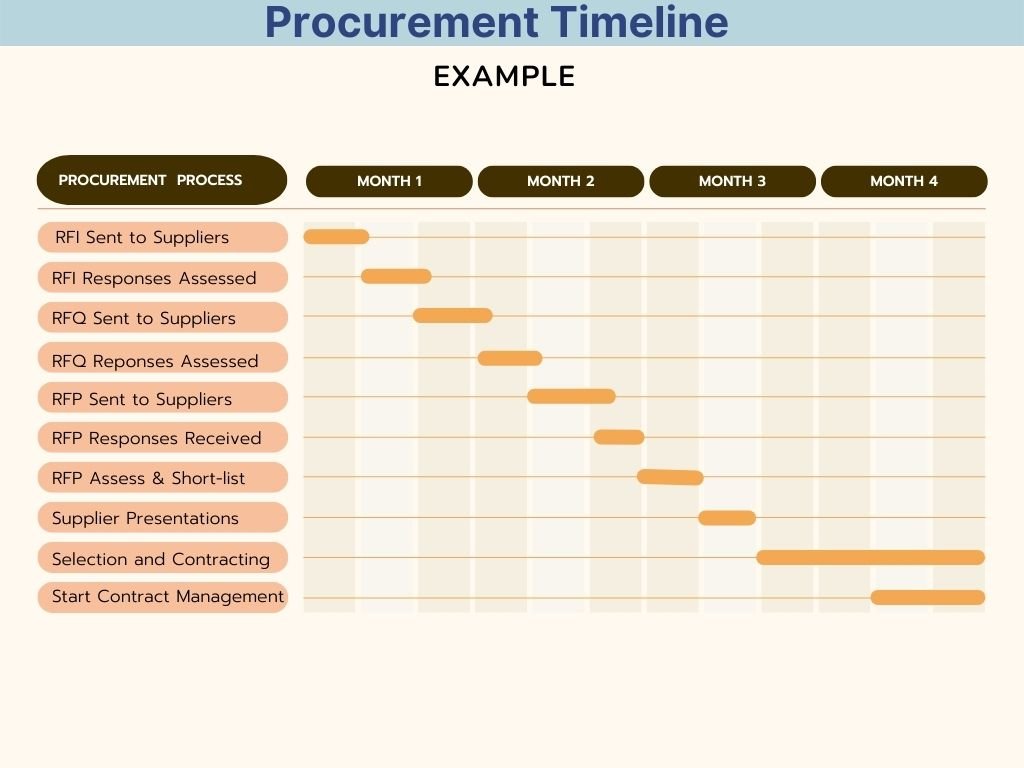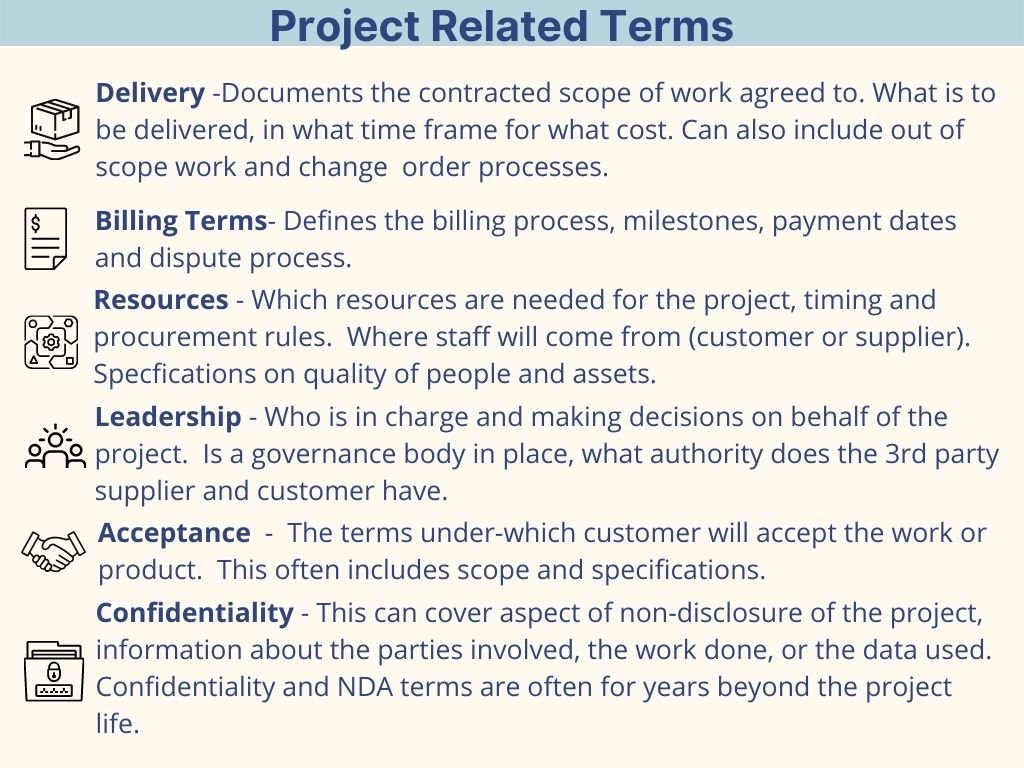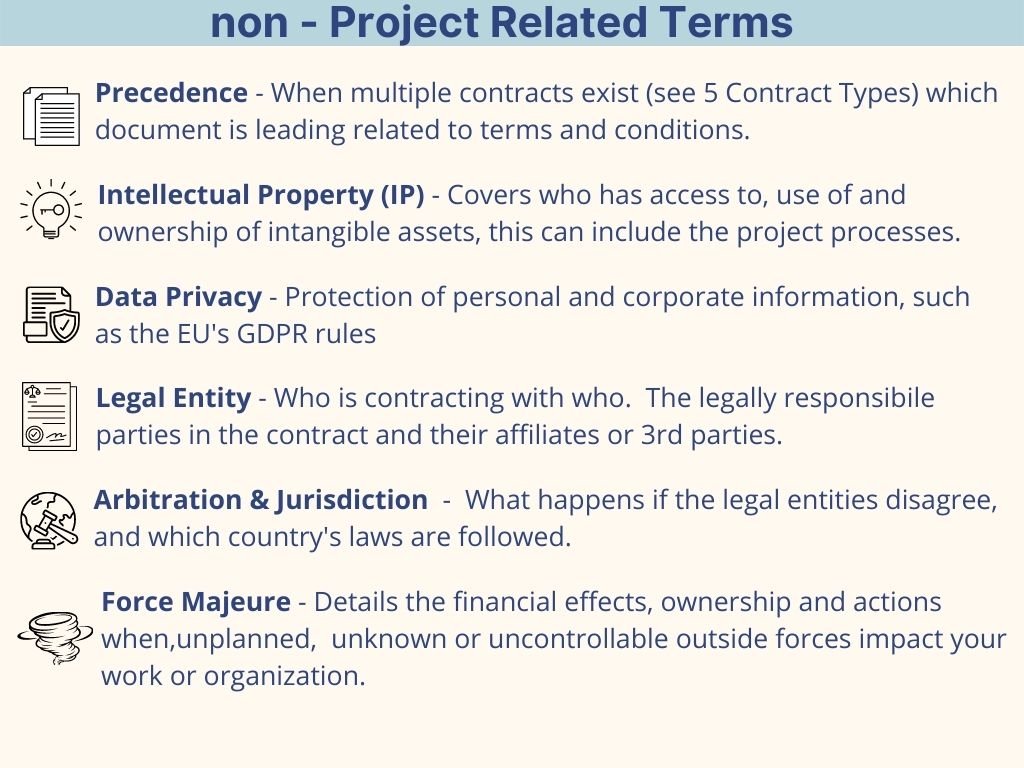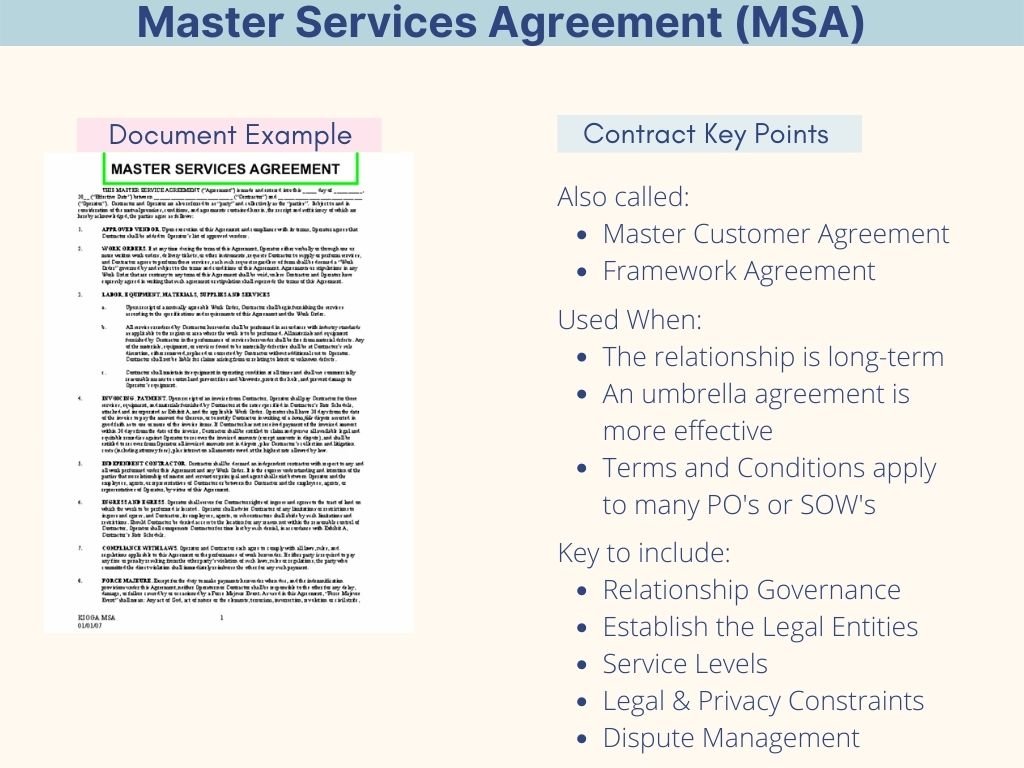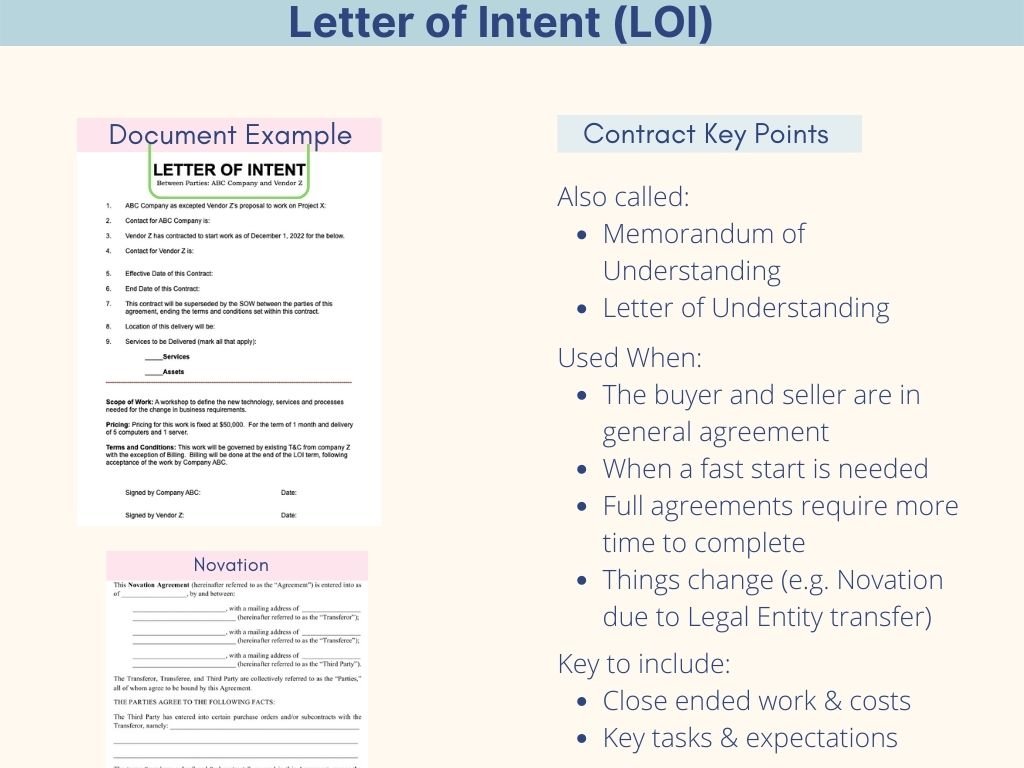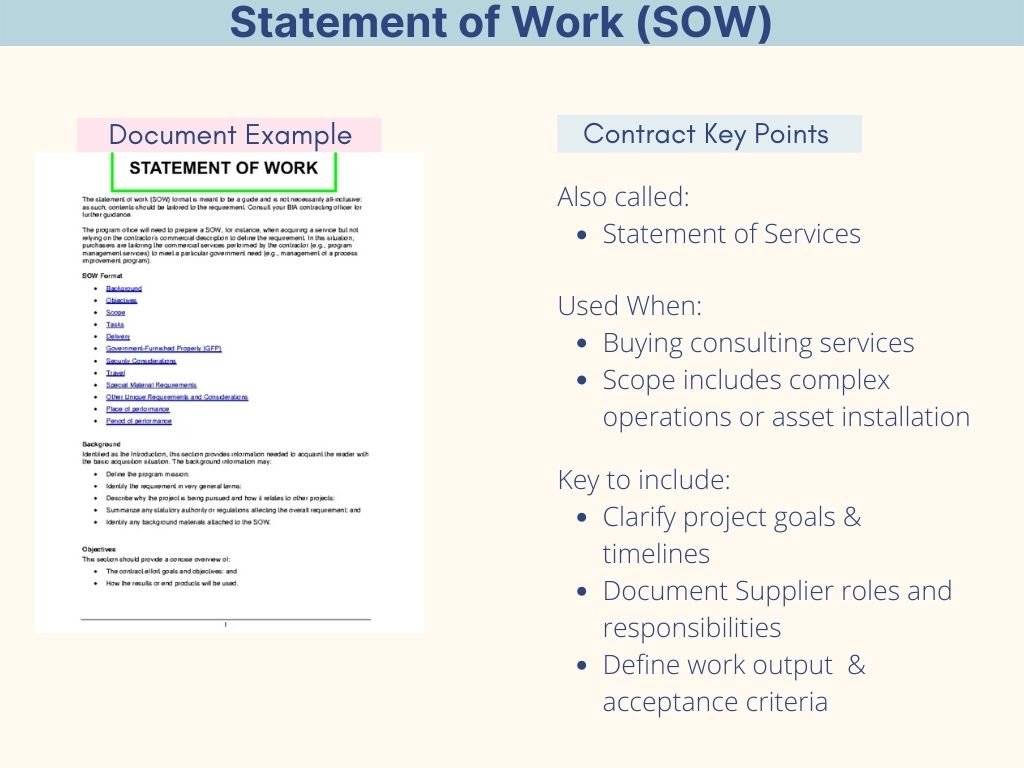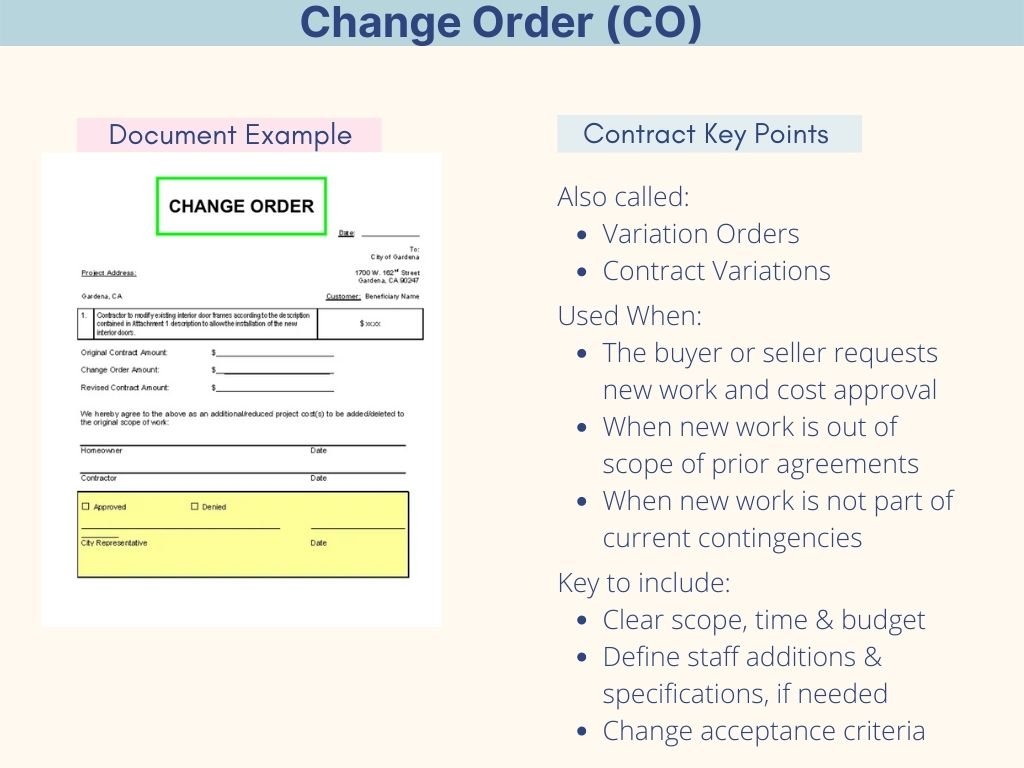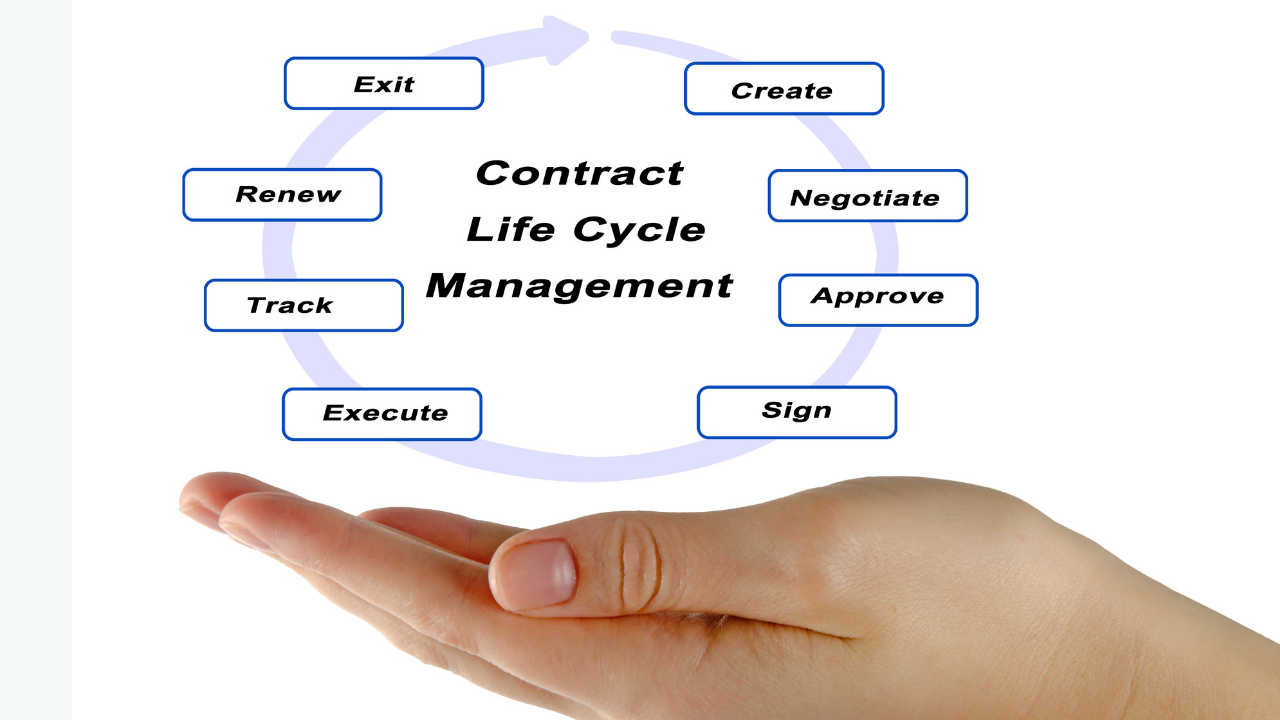The Project Procurement Process
The Procurement and Contracting Process for Projects is not something that Project Managers need to use daily, but it is a process that every Project Manager needs to understand.
What are the steps in a procurement process? How does contracting impact the Project Managers' tasks? And what do Project Managers need to know about contracting terms? Find out in this article.
What PM’s need to know about Procurement:
Why they need to be involved
Who owns the Process
What is the Process
What happens after the Process
Why do Project Managers need to be involved in Procurement?
Project Managers tend to focus on the running of their Project. Their team: the people, processes and output. And their Projects solution or product being delivered to the company or customer. But what happens when the Project needs supplies, assets, or specialized staff?
Project managers often cannot complete their projects without outside support or materials. They need to understand the time, cost, and effort procurement to complete their projects on time and within budget.
There is so much to understand to be an effective Project Manager. How can Managers keep track of yet one more thing? With a process flow and easy access to the basic information, they can create or use a reference guide for those times when they need to follow the Procurement Process.
Ask your company if they have a summary Procurement Process document to reference. If they don't, or if you work for a small company, you may find my free downloadable to Project Procurement Management helpful.
In addition, many Project Managers are also contractors. The supplier to buyers of their services. While they may not always be directly involved in the Procurement and contracting steps. Experienced Managers know they should be.
Whether you are impacted by the buying or the selling side of this Process, managers need to understand the basics so they are not burned by project contracts that impact their work, output, or final delivery.
Project Managers are tasked to be responsible for Project outcomes. So you need to make sure the procurement process and the related contracts make sense for the Project and make sense for the client-supplier the outcome.
Contracts create expectations, rules, and requirements for Projects, Companies, and Suppliers. Good Contracts can make a Project easier to manage. While bad contracts can break relationships and stop a Project.
Who owns the Project Procurement Process?
Companies have purchasing departments that handle most purchases. Larger Procurement requirements may be handled as part of the Project deliverables. Executive Sponsors and Project Managers need to know how this process works to engage with outside suppliers and, more importantly, work with internal departments such as Purchasing, Accounting, and Legal.
In the end, even when the Project Manager does not own the Procurement Process, the related outcome may end up being 'their problem’ to solve. Examples of this include when:
Services are billable only if certain milestones are met
Service levels and acceptance rules apply to testing or hand-over steps
Equipment is warrantied only if certain obligations addressed
In each of these situations, the Project Manager may be held accountable even if they were not involved in the decisions made during Procurement and Contracting processes. It may be that Managers were not given the contracts and related information related to their Project, and so are unaware of the ‘landmines’ to avoid. If so, it is likely the Project Manager will find themselves dealing with unplanned problems and disputes.
Smart Managers expect to be in the loop or a decision maker when procuring goods or services for their Project. They make sure they read and understand the documents between suppliers and buyers, and know how they relate to their project delivery.
What is the Procurement Process?
The procurement process covers the entire management process of identifying a need to fulfilling it. This process includes steps that are managed internally, with Suppliers and finally on the project. A summary of each of the key steps in the procurement and contracting processes along with examples and templates can help Project Managers visualize the end-to-end process.
Understand your Goals
If you are a Buyer (Customer) or Seller (Supplier), you need to understand your goals as well as the goal of the other party.
Start from the beginning. What are your goals? Establishing these can include reviewing:
What do you require and why?
How does the contracted work fit into the overall solution?
What are the expectations of the stakeholders?
Does your company or Project know how you want to Contract?
What special terms and conditions are needed to meet the goals of the buyer and/or seller?
What additional service levels, warranties, or maintenance contracts will be required to support this purchase?
Who is responsible to delivery?
When is the delivery planned?
Is the delivery acceptance criteria clear?
Does this timing fit with the project requirements?
Make a Checklist for the Process
Project Managers are no stranger to creating a Checklist. It is the easiest way to ensure tasks are documented and completed.
In this example, the Checklist includes
Questions to ask during the Process
Steps to complete
High-level information on what is being procured
And a place for specific notes about the scope of work or equipment specifications
List the documents you need and what they need to include. If your company does not have templates, you can use a web service to create fit-for-purpose documents at sites like this one.
Procurement is another Project
Procurement is often a project within the project. This is true of large and small purchases, since most projects need these goods and services in order to deliver.
Use the corporate process, or make your own to fit the needs of the work and the Project. See this example to inspire you.
Understand the Procurement steps
Every procurement process may differ by a little or a lot. Meet with the team working on the Procurement process. Treat this work like a project so that you will have clear understanding of:
Roles and Responsibilities
Required Documents
Timelines and Milestones
Make the Plan Visual
Plans make your Project tasks and timing clear. Some of this plan, such as the Procurement timeline for Suppliers, can be shared (at least in part) with the companies you are asking to bid on your work. This will help to set their planning expectations as well.
Request for Information - RFI
When a new requirement comes up at your company or on the project. You will likely need to do some research before moving forward. Information is power, so taking time to find out the art of the possible, current solutions and who is working on disruptive technology, will be key to the long term success of the procurement process.
Checking the Marketplace
Before buying services, you want to know the art of the possible. What is standard in the industry and who are the disrupters. An RFI allows you to gather information effectively from suppliers directly with no commitment from you.
Request for Quote - RFQ
Request for Quotes are not always done, sometimes Buyers and Suppliers move directly into Request for Proposal or combine the RFQ and RFP. But if you are still assessing the market and looking for a good fit, it may be good to use this step to identify those with a good solution and the right price. But note that estimates may be market pricing - not final pricing. Ask what is included in the pricing, pricing assumptions and what is included in the price. Don’t forget to ask for drafts of the key contracting documentation, this can tell you a lot about the Supplier as well. And of course, plan to negotiate pricing, terms and solution delivery, RFQ information is just a starting point.
Looking for a Match
The RFQ is more than a request for a cost. You are looking for the right solution, from the right team, at the right price with the right contract.
So be specific in your request to Suppliers:
What will be delivered
Who will do the work
How will they deliver
What is the price
What terms and conditions will apply
Request for Proposal - RFP
The RFP will likely lead to the final assessment and selection of your chosen Supplier. This means it’s time to be as specific as you can be. The document is generally written by the Buyer, but some organizations use specialized contractors or tools to create this document. Either way, make sure the RFP is fit for your Project. After the RFP responses are received you should down-select a small number of ‘best fits’ and ask for solution Presentations where you get to meet the decision makers and the team your Project will work with. This gives you an opportunity to discuss solutioning and address questions, but also to meet and evaluate the team (or leadership) you will work with. This is an important step, so don’t skip it.
Once the final Supplier is selected, you may want to advise the other Suppliers they have not been selected. However, you may want to wait a week or two, or tell the other Suppliers to ‘stand-by’. This allows you to see how the negotiations on pricing, terms and service conditions go. Once you feel comfortable that the selected Supplier and you will be able to contract, let the other competitors know. The losing Suppliers may want to meet and review their standing in the process for lessons learned. In some industries this is a common practice, and useful for keeping the Buyer and Supplier relationships in good-standing for future opportunities.
Look for your new Partner
The selected Supplier will be your new partner. Either for a one-time, short term delivery. Or for a multi-year contract that will be vital to your ability to complete your project successfully. So treat the process with respect and openness. You want to get started on the right foot.
Understand the Contracting steps
Use the right Contract
Knowing what kind of Contract matches your Procurement goals is important. So be familiar with the planned approach. Work with Legal, Procurement and Accounting early to ensure you know what you need from the Contract. Determine if the Contract templates will come from the Buyer or Seller. And remember to negotiate for not just the price, but for all of the key terms that can impact the services and goods you are receiving. Example of this are:
Payment schedules based on milestones or success metrics
Data Privacy and Protection for your Company or your Customers
Intellectual Property access, use, and ownership
Changes to services and staffing
Governance and oversight
Dispute resolution
Project Contracting Terms are Important
Understanding the definition, scope and impact of Project Contract wording is important. Never sign something you don’t understand. And never take responsibility for managing a project if the related contracts have not been shared with you.
Know Terms that may impact your Project
Sometimes considered small print, these terms may impact:
Project equipment delivery
How disputes are resolved, or
Can change which Contracts are actually being followed
So make sure that you read the contracts and review with your Legal and Procurement departments. Make sure that the Contract can be met and works for the Company and Project. Set up Governance with the Supplier to regularly review and discuss concerns or issues with current contracts.
If you want to know more about two common types of contracting, see the playlist for Contracting Tips and Turn Key Contracts click here.
Now that you know the type of Contract right for your Project and the company. Consider the details on what is included and how to get the Contract ready for signing.
Contracts for the Long-term
MSA’s are large and complex agreements, since they are generally made to cover long-term, large and complex relationships.
These can be tricky to read since wording is focused future-proofing the Buyer and/or Seller against unknown changes and impacts.
Contracts for the Short-term
When you need an agreement to start working fast, and before the formal agreements are ready, a Letter of Intent can be the short term remedy. Limit the scope, timescale and terms to allow this document to be superseded by the new Agreements, once they are signed.
Contracts Covering Specifics
SOW’s are great documents for Projects, they essentially follow a document Project Managers know and understand: The Project Charter. Depending on what is being purchased, this document can include the same amount of detail as the Charter, or just a component of materials or work. However, it is helpful if the Supplier understands the Scope of the Charter and how their work contributes to the overall Solution.
Process based Contracts
PO’s are the best way to pay a Supplier. They are controlled documents that often are more ‘systematic’ in their creation and review. The primary focus of a PO is to ensure the ordered item is complete and has the right quality. PO’s are often used as the trigger to approve and release payment to the Supplier. These Contracts work well for supplies, equipment rentals and asset purchases.
Contracts beyond Contingencies
Change Orders can be part of the normal project work. Project contingencies allow for some amount of change control. But when the change is significant in impact and or cost, a new Contract to supplement the work is needed. Like the SOW this document to clear state the specific scope, time and delivery associated with the work.
What happens after the Procurement Process?
The supplier is selected, contracted, and delivery is planned. It feels like you should be finished. Unfortunately, most likely, you are not.
Suppliers and Buyers must be managed beyond the contracting stage. Delivery, Stakeholder expectations, or the Project needs may change.
Creating a Governance model to manage post-contracted quality reviews and change control can keep the relationships open and positive. When contracts or delivery run into issues, the stakeholder relationships of all parties are more vital than ever to stay focused on solving problems and maintaining the partnership.
Project Managers may need to assign Contract or Account Management tasks to a member of the PMO. They may also need to track KPIs or Metrics to ensure that the contracted obligations are met. This should be done for all contracts for which the Project is either the supplier or the buyer.
Contract Management should be planned similarly to any project oversight activity. Estimates should be budgeted for staff time, costs and activities needed to manage project billing, milestone oversight, and account management.






